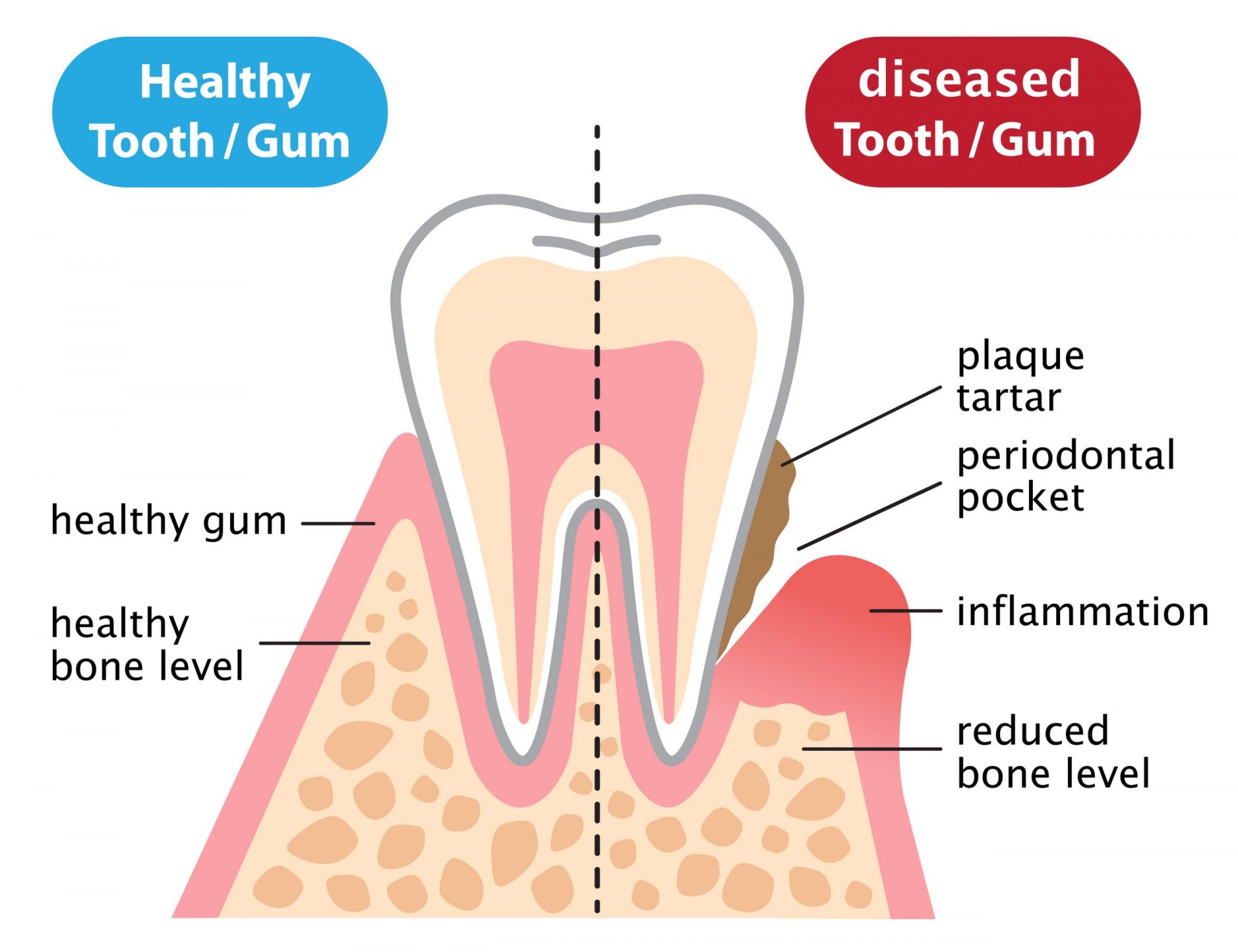If you have been diagnosed with gum disease, you are not alone. In fact, almost half of the adult population aged 30 or older experience periodontal disease to some degree. When you are one of them, seeking periodontal therapy is crucial.
Before you seek treatment, though, it’s good to familiarize yourself with the different types of periodontal therapy and the benefits they offer. Here’s everything you need to know.
The Stages of Gum Disease
Gum disease impacts 56.4% of men and 38.6% of women, but not all people will experience severe problems. Sensitive teeth, bleeding gums, and consistent bad breath are just some of the potential warning signs. No two cases are identical.
Periodontal disease is a progressive condition caused by bacteria that infect the gum tissues. Gum disease is subsequently broken into the following four stages:
- Gingivitis – This stage of gum disease is reversible as it has yet to impact the bone. Professional periodontal therapy to remove the bacteria followed by good home hygiene can reverse the damage.
- Slight Periodontal Disease – Stage two of gum disease is manageable, although the bacteria has started to damage the bone. As the bacteria evolves, it will become more aggressive and cause bone loss.
- Moderate Periodontal Disease – The third stage of gum disease is not reversible. Probing depths are up to 7mm (up from 5mm for stage two) and can attack the bloodstream or immune system.
- Advanced Periodontal Disease – Stage four of gum disease is the most severe situation and puts you at significant risk of bone loss. The gums likely ooze pus at this stage and may need significantly more treatment.
Arizona Periodontal Group supports patients at all stages of gum disease. Your periodontal therapy will depend on the severity of the condition. The best procedures are detailed below.
1. Antibiotics and Prescription Mouthwash
Prevention is the best form of protection from gum disease. Practicing good oral hygiene which includes brushing twice daily for two minutes, flossing, and fluoride toothpaste is vital.
If gum disease has already started, prescription mouthwash can help control the development of new bacteria. This mouthwash will include chlorhexidine or hexetidine as the active ingredient to help achieve this.
You should rinse your mouth before using the prescription mouthwash as some toothpaste contain ingredients that stop the mouthwash from working. Your dentist will confirm how long you should follow the prescription, but it is likely to be for around 2-3 weeks.
Antibiotics, including metronidazole or amoxicillin, are another potential periodontal therapy. The antibiotics usually come with a prescription for three days. They are usually to treat acute necrotizing ulcerative gingivitis (ANUG). Dr. Trujillo will discuss the full directions, such as not drinking alcohol with the medication, during your consultation.
2. Scaling and Root Planing
You will need to remove plaque and tartar to successfully reverse gingivitis or manage more significant periodontal disease. Professional scaling and polish is the most effective solution. Arizona Periodontal Group can provide a deep clean that combats existing plaque and tartar.
Specialized dental tools scrape away the bacteria of plaque and tartar build-up. One session is often enough for minor cases of gingivitis. However, for more significant tartar growth, you may need two or three sessions. Polish removes the dark marks developed on the tooth surface.
Root planing, also known as debridement, is a related solution. It involves a similar process but gets under the gum line to clean bacteria from the root of the tooth. It is often for stages two and three of periodontal disease.
You may require an anesthetic ahead of the root planing treatment. This will not be necessary for scaling.
3. Pocket Reduction Surgery
Pockets develop around the teeth when periodontal disease is left untreated. This means that the gum tissues no longer fit tight and snug around the tooth. As bacteria grow more aggressively, the risk of losing teeth increases. A pocket reduction surgery procedure will make the pocket space smaller, which subsequently gives bacteria less room to breed.
Pocket reduction surgery is the solution when home oral care and scaling therapy is not enough to save the teeth and underlying jawbone. This periodontal disease procedure involves folding the gum back before clearing the bacteria from the tooth. The gum tissues are then sutured back into place.
In some cases, irregular surfaces are smoothed. It is a process that removes an additional space where bacteria could potentially grow. Pocket reduction surgery can effectively prevent the further progression of periodontal disease.
The time taken to complete pocket reduction surgery varies from person to person. The number of teeth involved, along with the depths of pockets. improved oral hygiene should follow surgery to prevent the return of bacteria growth.
4. LANAP Laser Gum Treatment
Laser-Assisted New Attachment Procedure, or LANAP, is an alternative periodontal therapy that delivers optimal precision. It uses laser light that is just the size of three human hairs. It subsequently vaporizes the dark layer of pigmented bacteria. After the removal of diseased tissue, an ultrasonic scaler removes the plaque and tartar.
Following the removal of bacteria, blood clots form to stabilize healing. It prevents any bacteria from escaping into the pockets surrounding the tooth. In addition to new connective tissue, some of the bone may reform over a period of 6-12 months.
You will also receive enamel reshaping in addition to the LANAP work. It makes LANAP laser gum periodontal therapy one of the most effective and popular solutions. Patients with stage three or stage four gum disease are regular candidates.
Dr. Trujillo will explain the full procedure, along with the expectations, at your consultation. However, it is often the best solution when bacteria damage has damaged the underlying bone.
Schedule Periodontal Therapy in Phoenix, AZ
If your mouth is hit by gum disease, periodontal therapy is the best way to regain control. Arizona Periodontal Group has helped thousands of patients like you. To discover the extent of your periodontal disease and the right form of periodontal therapy treatment, get in touch today!





